Are you planning a trip to Cordoba when you visit Spain? Cordoba together with Seville and Granada are among the most beautiful and most visited cities in Andalusia. We spent two days in Cordoba and totally fell in love with it. Lots of gorgeous views, great food, amazing gardens and architectural gems everywhere. Let’s take a look at what you shouldn’t miss when visiting Cordoba.
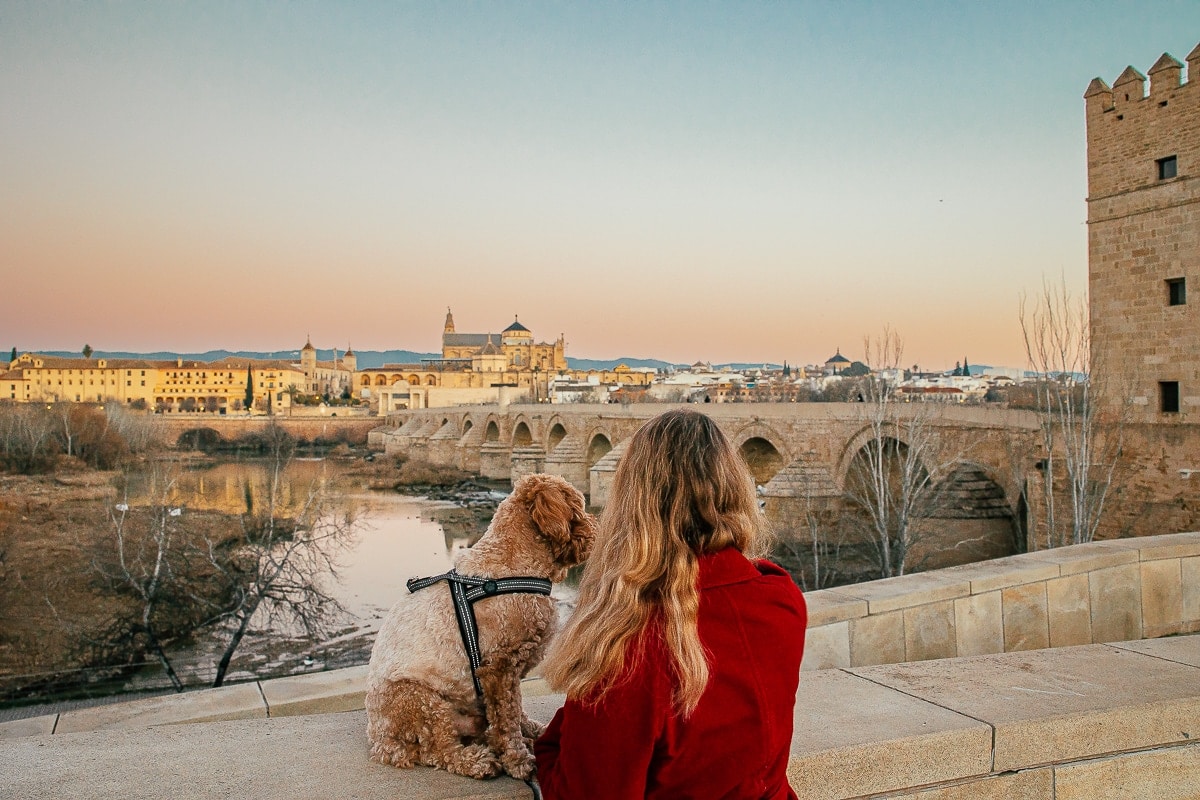
History of Cordoba – What you should know
The history of the town dates back to Roman times when it was known as Corduba. During 8. and the 9th century, Cordoba became the capital of the Caliphate and the centre of the Islamic world. Cordoba is therefore mainly known for its architecture, which consists of a mixture of Roman, Islamic and Christian elements. Among the most famous landmarks is the Mezquita, a mosque cathedral where you will find a literal cathedral built inside a mosque.
Cordoba – the best accommodation
We were really excited about our choice of hotel this year. We stayed right in the centre at Hotel Hesperia Cordóba, where you can take your dog and park your car in the hotel. Parking is paid, but when we researched it, even hotels outside the centre wanted a parking fee. Parking is also available under the hotel in the garage, which is much safer than parking on the street.
The Hesperia Cordóba also has an absolutely amazing breakfast. What I regretted was that in February there was no open roof overlooking Cordoba, but we could see the sunrise directly from our room and watch the sunrise almost from the bed.
When to go to Cordoba
Cordoba is one of the hottest places in Europe, so spring and autumn are the best times to visit. But most of us go to the seaside in the summer and explore Andalusia during the hottest temperatures. It can be done, I’ve been to Andalusia once during the summer too, it’s important to go sightseeing early, plan your visits to attractions well so you’re inside during the worst of the heat and most importantly always carry water with you. Andalusia also sees a lot of tourists during the summer, so buy your tickets online in advance to avoid queues. We visited Cordoba last time in February and it was great.
How long to go to Cordoba for
Cordoba is ideal for 2-3 days with a trip to the neighbouring Seville for a day trip. But the most interesting things can be done in one day.
15 tips on what to do and see in Cordoba
You won’t get bored just walking around in Cordoba, but to make sure you don’t miss anything, use our list of places to visit and things to do in Cordoba.
1) Cordoba’s Jewish Quarter (La Judería), the heart of the city
Cordoba’s historic centre is entered through the Almodovar Gate, which is surrounded by high walls and bastions. This also leads you to La Judería, the old Jewish quarter of Cordoba.
Here, stroll along typical Andalusian streets with white-plastered facades and floral balconies. Don’t forget the calleja de las Flores, the most famous little street in Cordoba, which leads to a nice view of the Cordoba Mosque-Cathedral.
This district is a UNESCO World Heritage Site and includes most of the historical monuments that you should not miss. Here you will find the cathedral mosque and the Alcázar. We will talk more about them below.
2) Mosque-Cathedral of Cordoba
Cordoba’s Mosque-Cathedral (sometimes called the Mezquita) is the city’s emblematic monument and undoubtedly the most imposing of the city. There are very few stranger architectural creations than this hybrid structure. First it was a pagan temple, then a basilica, then a mosque and finally a cathedral. When you walk in today, at first you feel like you’re in a mosque, because the space is dominated by a long, grand column. There are 850 columns, previously there were over 1200. But in the middle of it all is the cathedral.
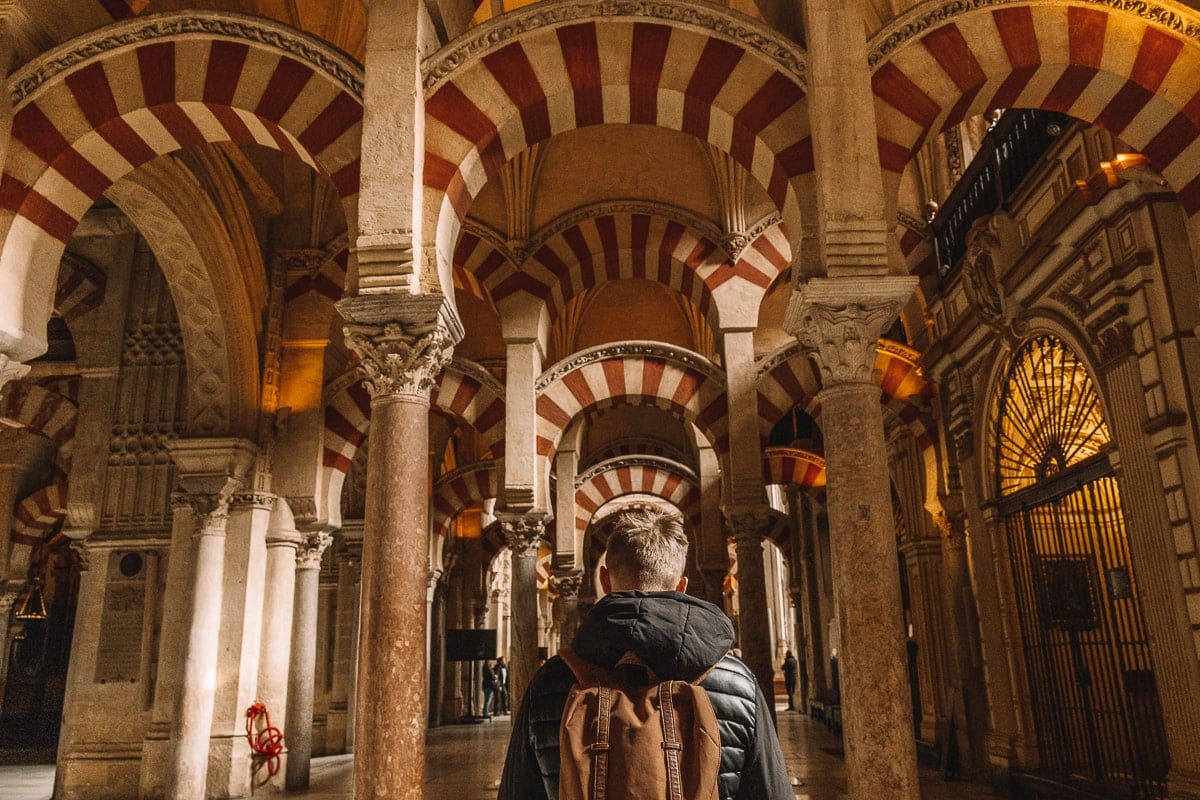
Tip on how to avoid queues
Avoid the queues and buy your tickets in advance via GetYourGuide, like we did. During the tourist season, you’ll appreciate it even more because you can skip the queue with them.
3) Alcázar de los Reyes Cristianos
Just a few blocks from Mezquita is the Alcázar de los Reyes Cristianos, or Palace of the Christian Kings. This palace was built in the 1300s as a fortress and later used as the residence of Queen Isabel and King Ferdinand when they set out to defeat the last remaining Moorish states in southern Spain. Today, it is one of Cordoba’s proud UNESCO heritage sites.
Inside the castle, only the structure remains. Especially the gardens are beautiful, where during our visit there was a wonderful smell of oranges everywhere.
History lovers must not forget the amazing frescoes from the 4th. century, discovered in the 1950s. You can also climb the tower for a beautiful view. Again, you can buy tickets in advance via GetYourGuide (even with a guide) or on the spot.
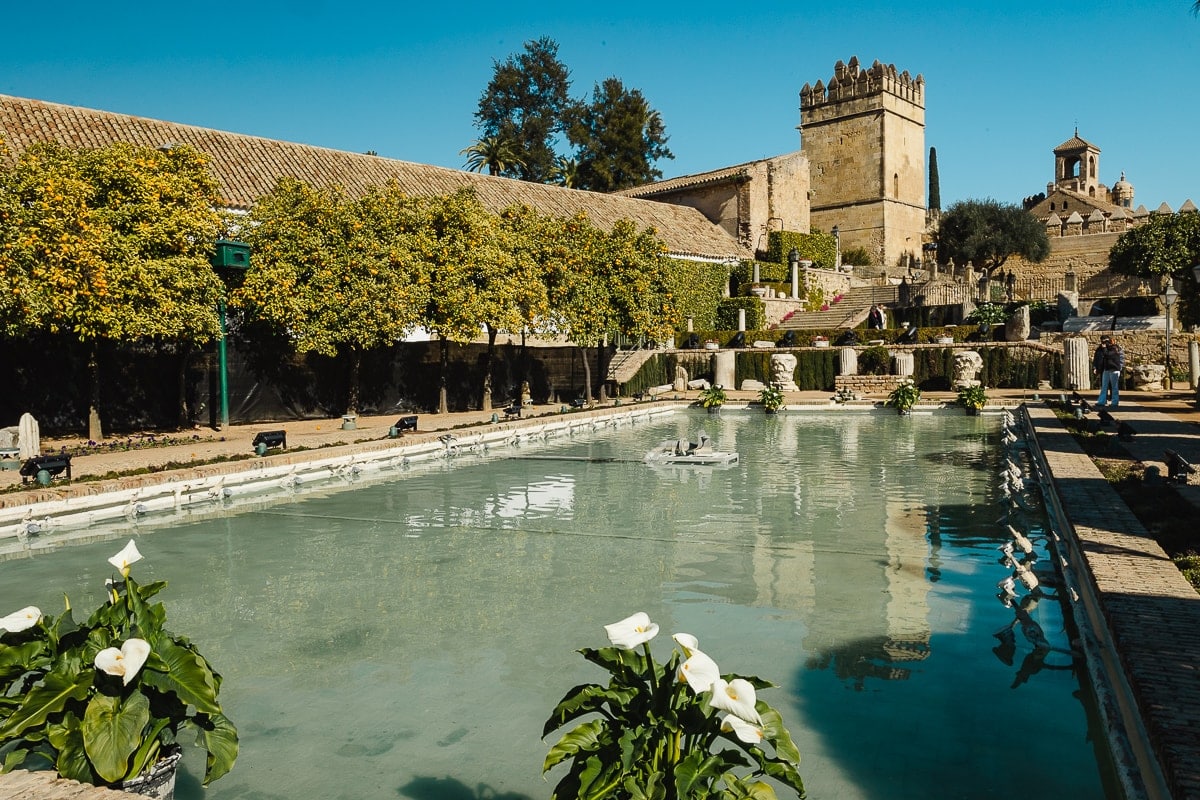
4) Jewish Synagogue in Cordoba
It can be found – not surprisingly – in the Jewish quarter and is the only existing synagogue in Andalusia and the third best preserved in Spain. Although small, it is worth a visit, especially for the interesting decorations made of stucco plaster in the main hall.
Until the expulsion of the Jews, the Jewish synagogue in Cordoba served as a temple. Later it was used as a hospital and school before being closed in the 19th century. century declared a national monument.
5) Chapel of St. Bartholomew
Very close to the synagogue you can find the chapel of St. Bartholomew. This chapel is a perfect example of Mudéjar art and architecture. It is located inside the Faculty of Arts and was built in 14. century. Inside you can admire the vaulted ceiling and walls decorated with typical ceramic tiles.
6) Royal Stables in Cordoba
On the land belonging to the Alcázar you will also find the royal stables ( Las Caballerizas Reales in Spanish), founded in 1570 by the horse-loving King Philip II. This is where the famous Andalusian horse breed originated. There are also horse shows every Wednesday, Friday, Saturday and Sunday.
7) Puerta del Puente
Puerta del Puente, or the gateway to the bridge, is located directly opposite the Roman Bridge in Córdoba. It was built in 16. century on the site of ancient Roman and Moorish gates and is built of large blocks of sandstone.
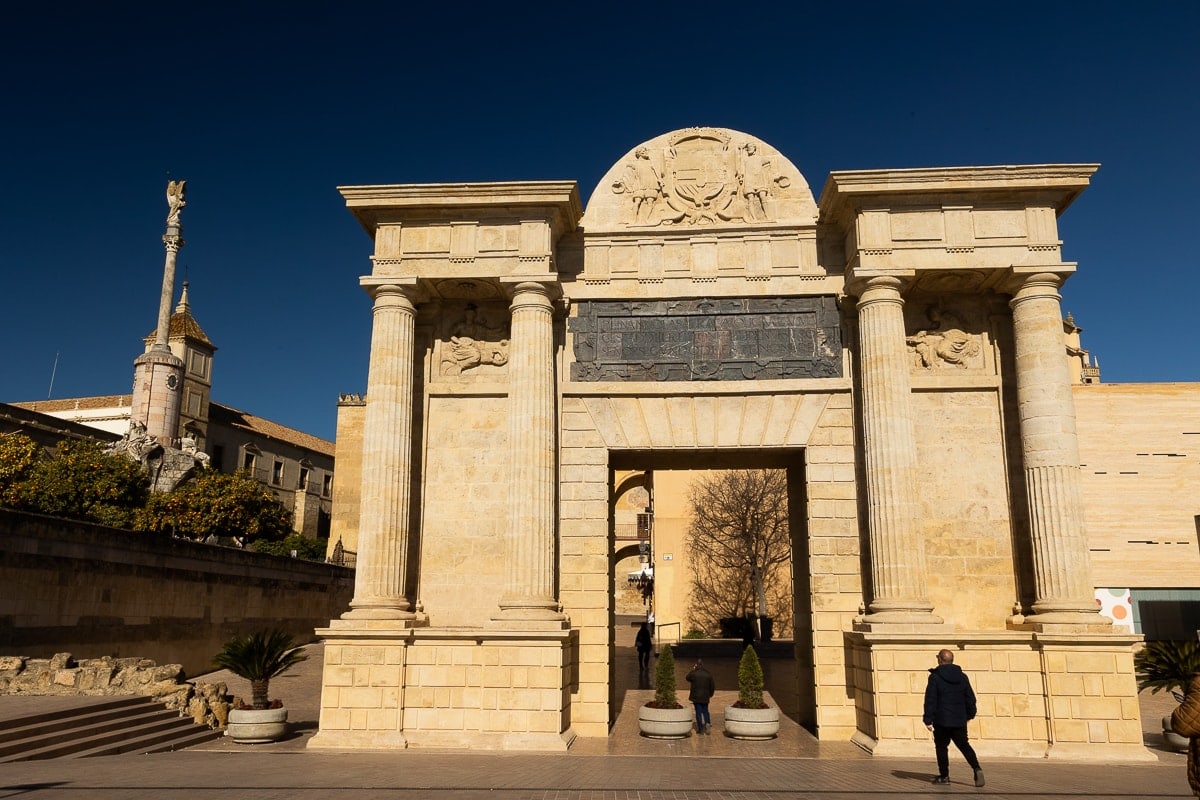
8) Roman bridge from the 1st century BC.
Now we’ll head to the Roman Bridge, the next obligatory stop in Cordoba (if you’re staying in the same hotel as us, you can’t miss it, you might even be looking at it from your window). The most beautiful pictures of the old town are taken from here, especially at sunrise or sunset.
When you cross the bridge from Puerta del Puenta, you will have a view over the Guadalquivir River with a view of the mosque-cathedral. It was built in 1. century BC and was for almost 2000 years the only bridge in the city and the main entrance to Cordoba. If you cross enough, you will reach the Calahorra Tower.
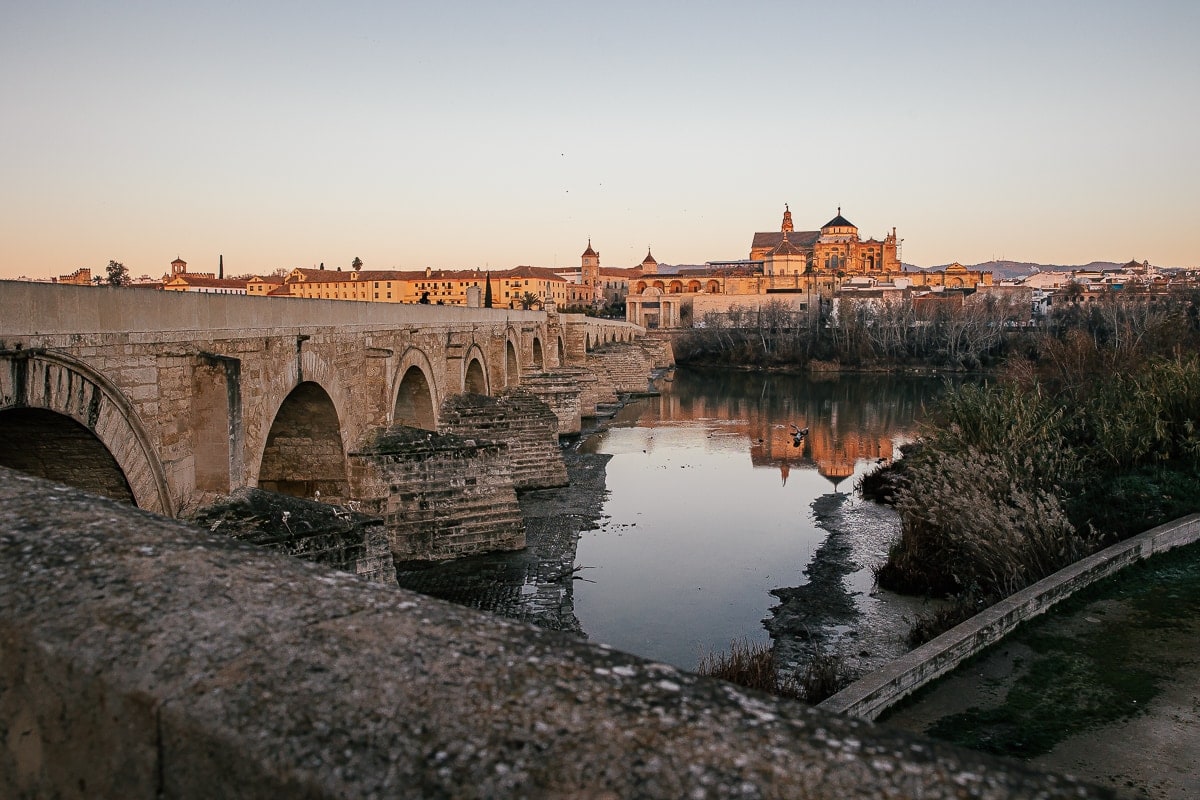
9) Calahorra Tower
At the end of the Roman bridge is a defensive tower from the Muslim era, called the Calahorra.
Formerly a school and prison, it is now the Al-Andalus Museum. This museum is about the coexistence of Jews, Muslims and Christians. From the tower you also have a nice view of the bridge and the river.
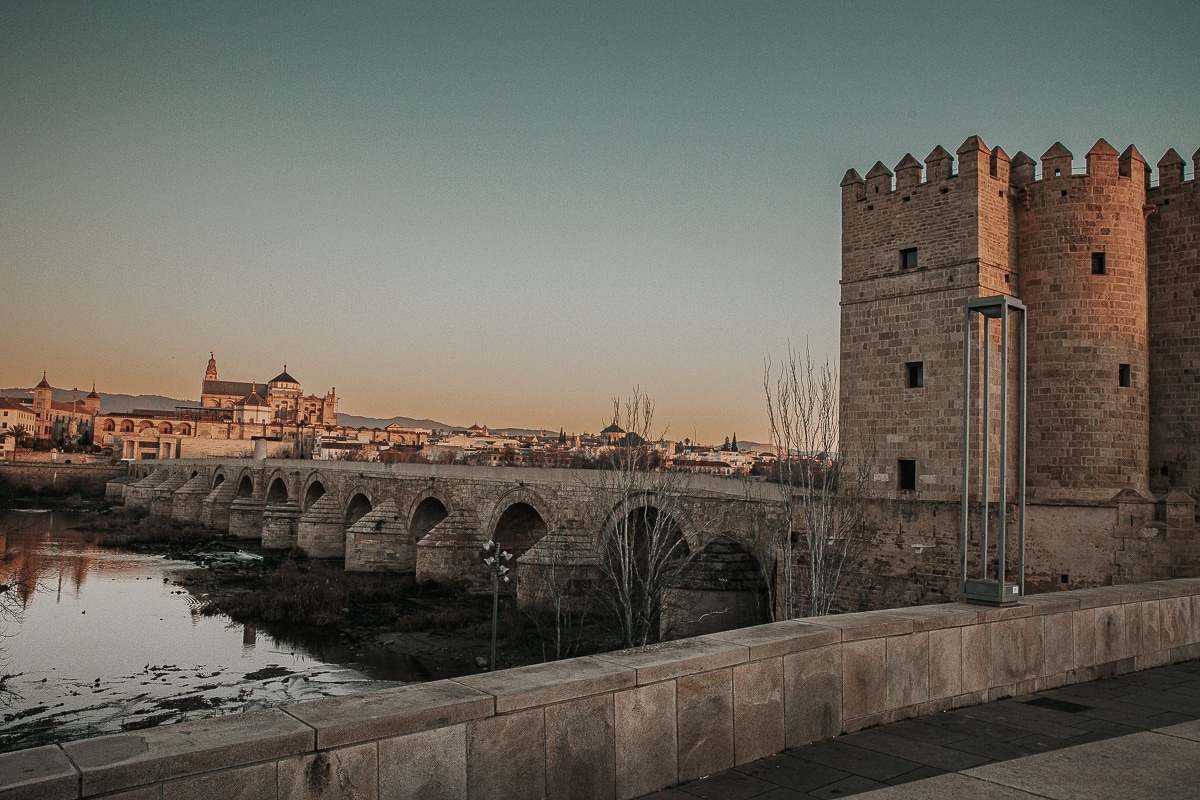
10) Viana Palace
We were absolutely blown away by the Viana Palace, which has 12 beautiful courtyards and gardens. Lovers of flowers – especially monsters – will find something to love here. If you love art, you will also be delighted by the impressive collection of paintings, old vessels and canvases that can be found in many of the palace’s buildings. But we left them out. 🙂
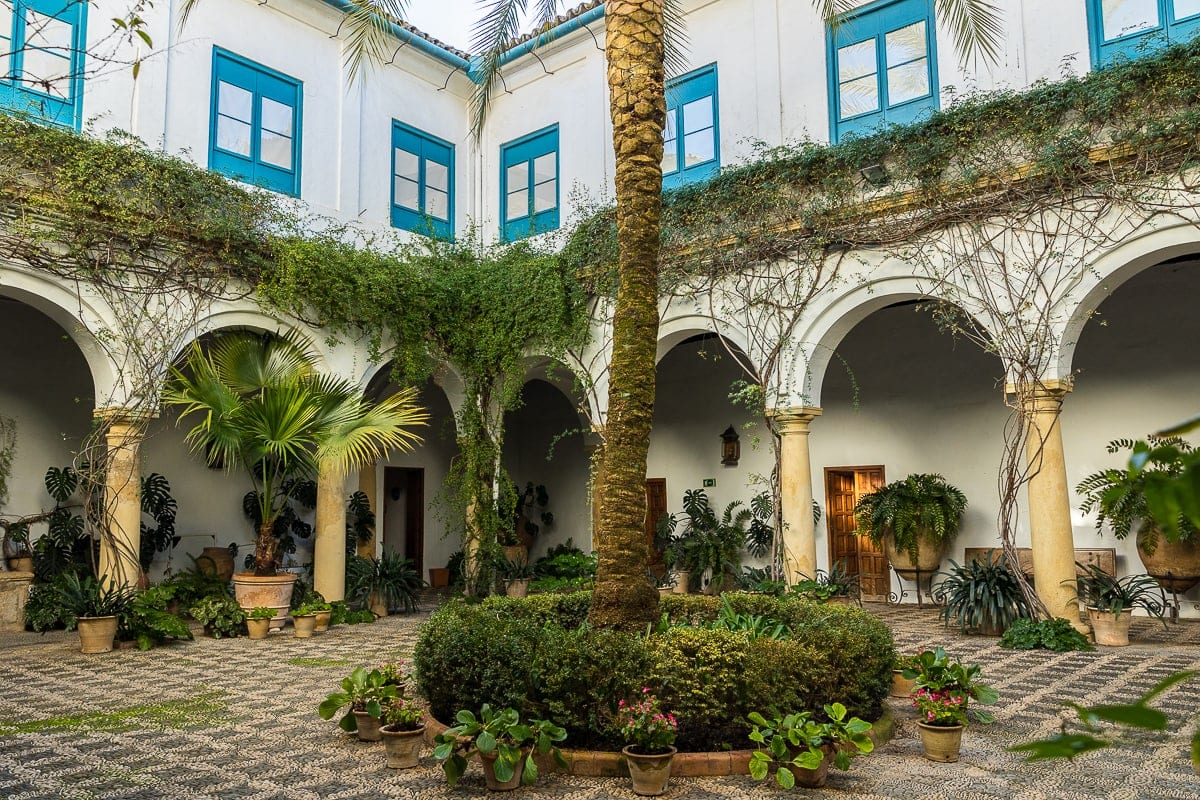
11) Check out the view from Calleja de las Flores, the street of flowers.
As you wander the narrow streets of Cordoba’s old town, make a quick stop at Calleja de las Flores. It’s more of an alley than a street, but it’s lined with hanging planters along the walls of houses and shops that are typical of Cordoba. Once you’re there, walk all the way to the end and look towards the cathedral for an amazing view.
12) Explore Cordoba’s flower-filled courtyards
In addition to the pots hanging on the white walls of the old town, Córdoba also has hidden inner patios full of flowers. Córdoba is one of the hottest places in Europe, and this patio was designed to keep cool even in the hot summer months. Some of the courtyards are just full of flowers and the walls are sometimes decorated with tiles, elsewhere you will find some water features. Most of them are open to the public in May, when the competition for the most beautiful patio takes place (more below).
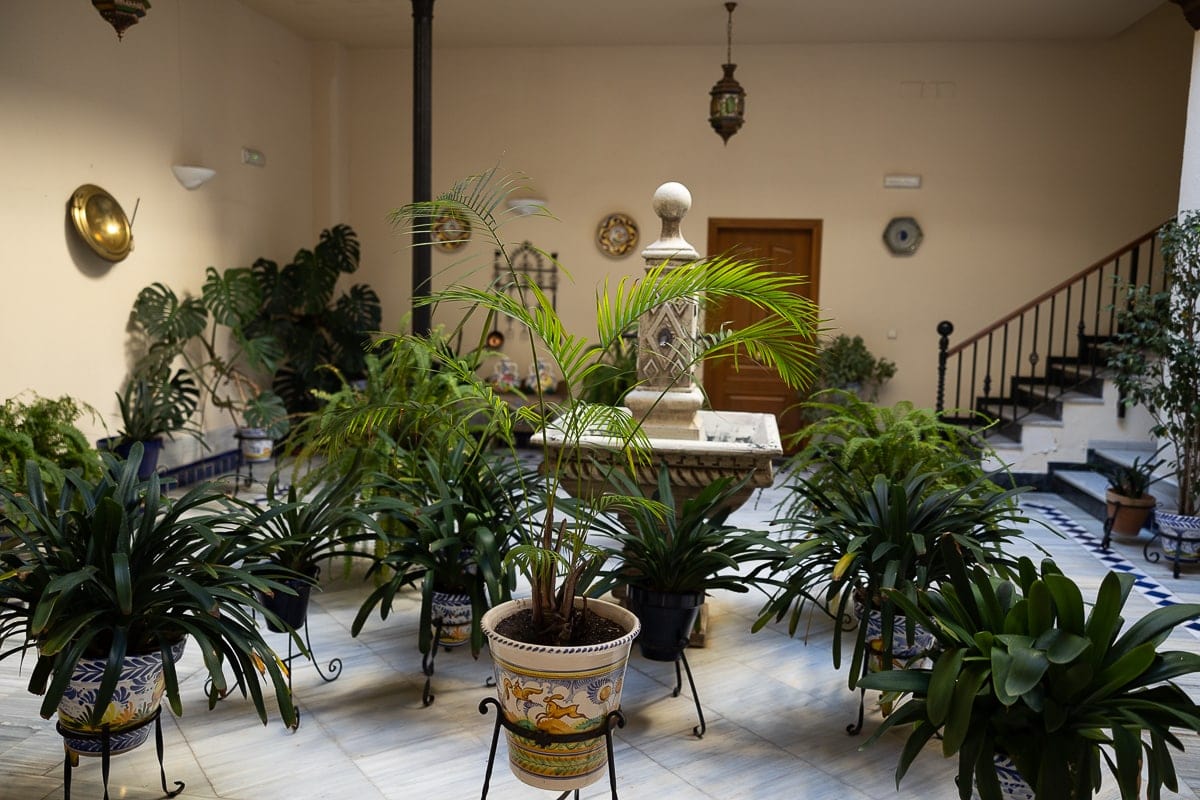
13) Roman temple
The Roman temple in Córdoba is located in front of the town hall and is not to be missed. It was only discovered in the 1950s. years 20. century during the expansion of the town hall. It is located on the corner where Claudio Marcelo and Capitulares streets intersect. It was not the only temple the city had, but it was probably the most important of all and the only one we have reports of from archaeological excavations. It is a temple with six columns and a Corinthian order, 32 metres long and 16 metres wide. Unfortunately, you can only see it from the street as there is no tour available.
14) Plaza de las Tendillas
The Plaza de las Tendillas is nothing special at first glance, but itis extremely popular for relaxing on hot summer days. Here you’ll find a number of bars, restaurants and terraces where you can grab a bite to eat and just hang out. It’s especially lively in the evening, when people head out for tapas and sangria.
15) Medina Azahara
Medina Azahara is located about eight kilometres west of Córdoba and is a UNESCO World Heritage Site. The town was built in the middle of the 10th century. century by Abd-ar-Rahman III as a manifestation of the power and strength of his kingdom. Medina Azahara was an Arab Muslim medieval city and the capital of al-Andalus – Muslim Spain.
In 1010 it was plundered during the Civil War and then abandoned. The first excavations began in 1910 and so far only 10% of the 112 hectares have been excavated and restored.
How to see everything in a short time
We used our popular Hop-on Hop-off buses in Cordoba to take you around all the sights. There are two routes in Cordoba, so we recommend doing both as we did. Please note that the audio guide is in English only.
Interesting events in Cordoba
- Festival de los Patios Cordobeses: competition for the most beautiful flower courtyard (May)
In Cordoba, people are fond of tending the beautiful courtyards full of flower pots and amphorae with plants. To make watering easier, the owners use a long stick with a can, which allows them to reach pots at great heights. And which is the most beautiful patio in Córdoba?
This is decided by the annual flower competition Festival de los Patios Cordobeses, whose tradition dates back to 1921. Since 2012, it has even been part of the UNESCO Intangible Cultural Heritage. Usually about 50 courtyards participate. There are two categories: traditional patios and modern patios. The 8 most beautiful courtyards from each category will be selected to win a cash prize.
Tip for a day trip from Cordoba:
Cordoba is also a great base for visiting Seville , this city is only 40 minutes away by train! Alternatively, you can go to Seville by car, but I’d recommend the train as you won’t have to worry about parking, which is quite difficult in any city.
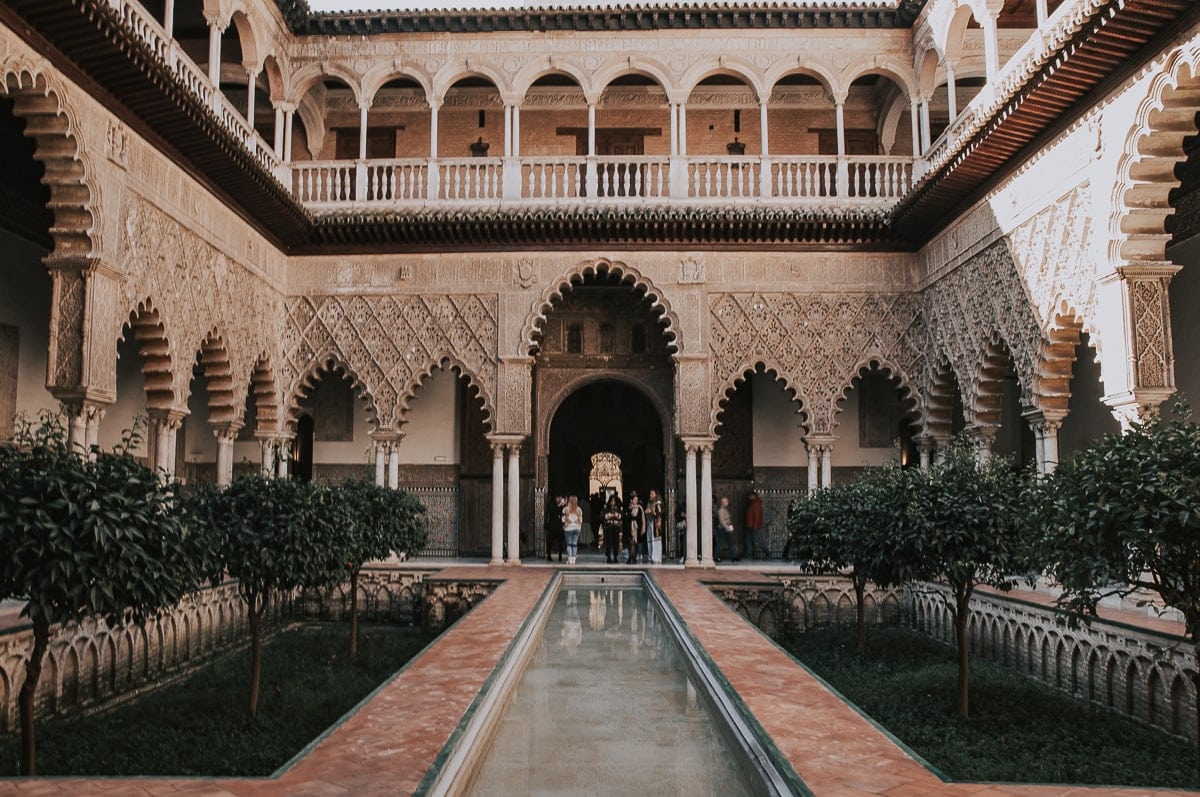
Map with points of interest on your phone
Save a map of the best places in Cordoba directly to your phone. After purchase, you will receive a link to a non-public Google Map, which you can save by clicking ”Follow/Follow”. This will copy it to your Google account and display it on all devices where you use Google Maps.

